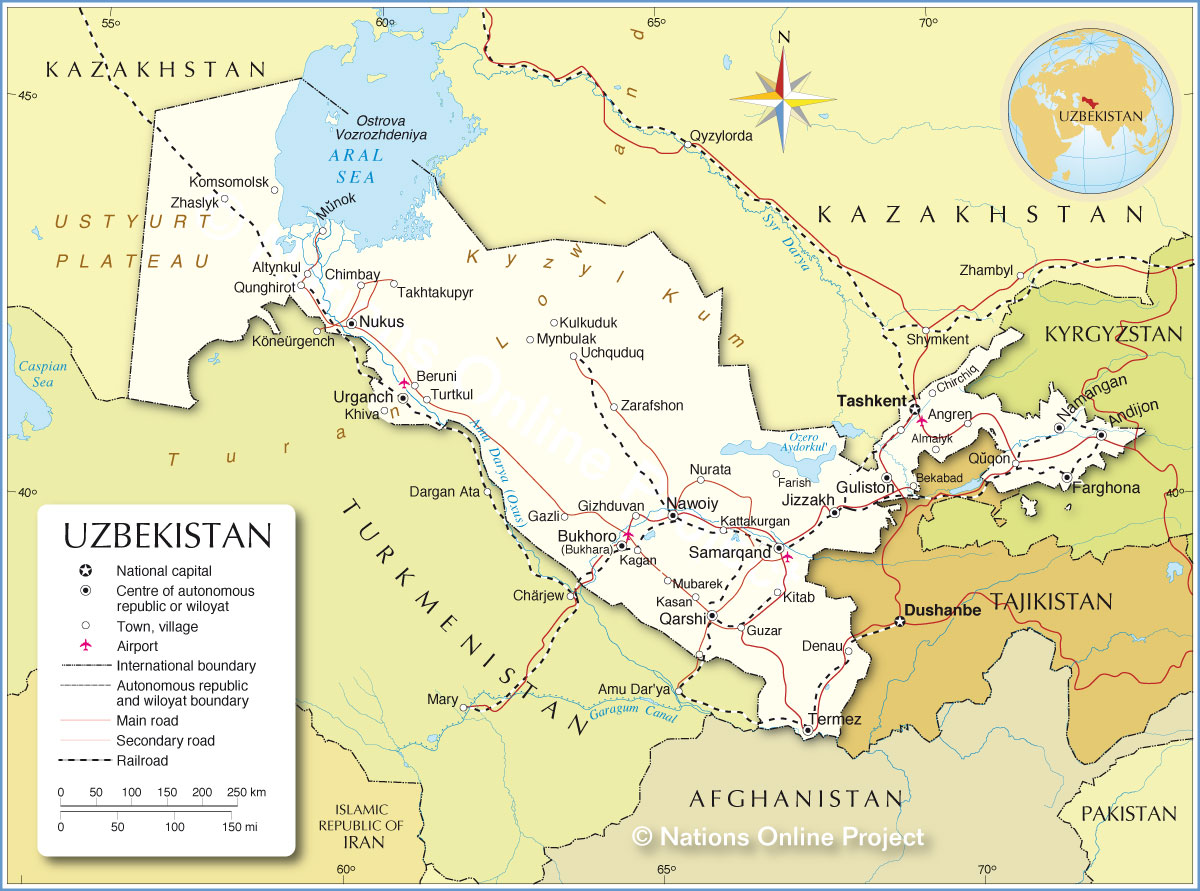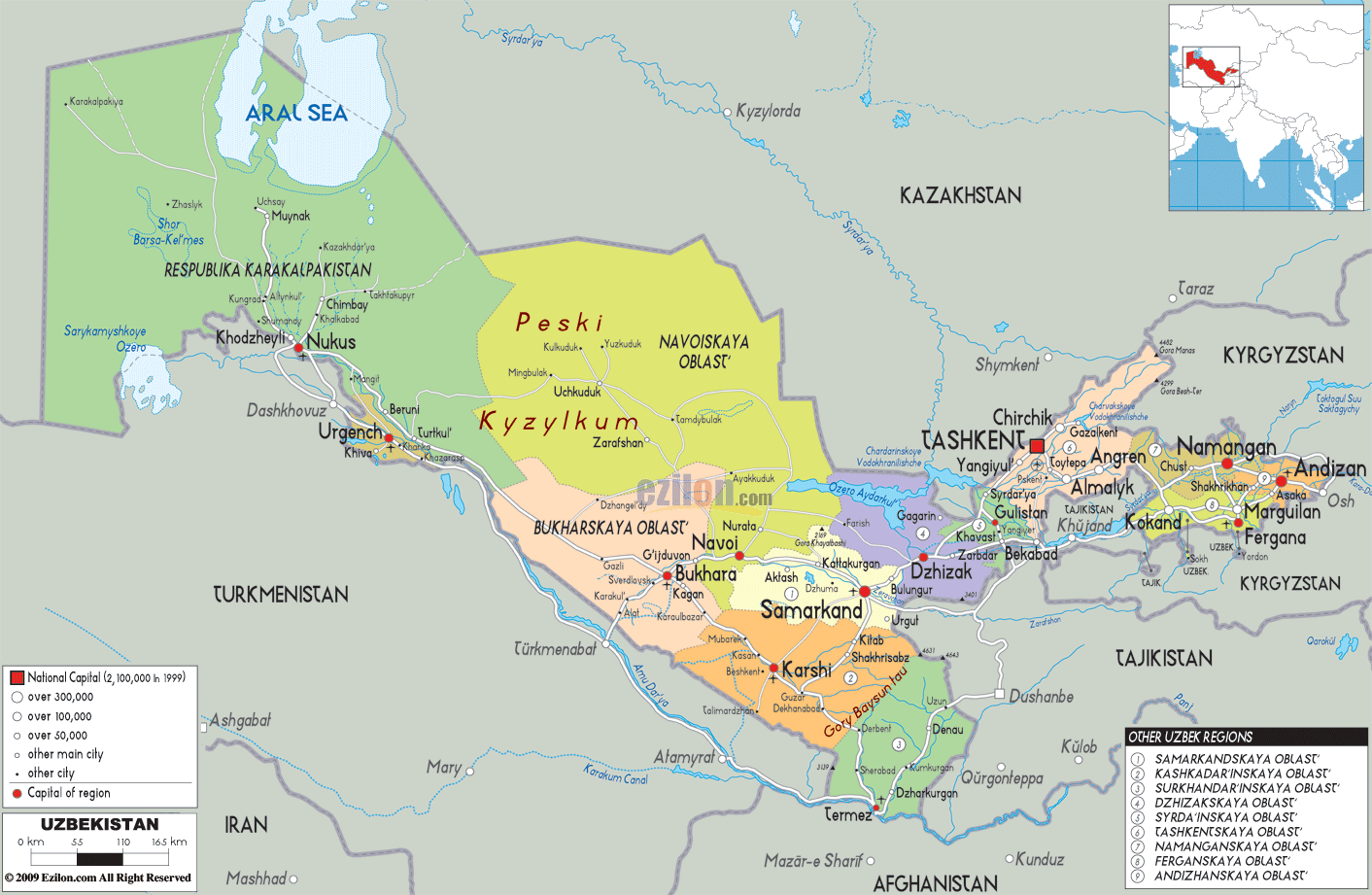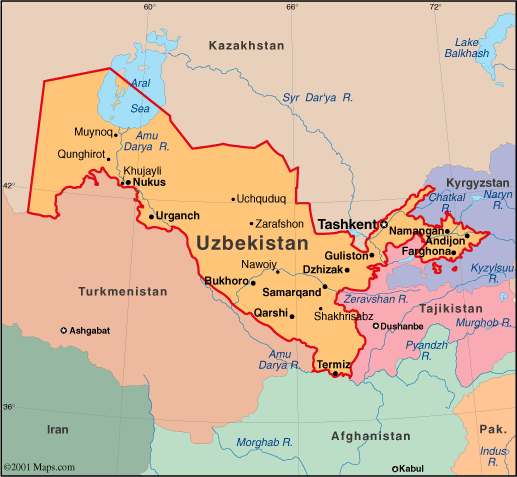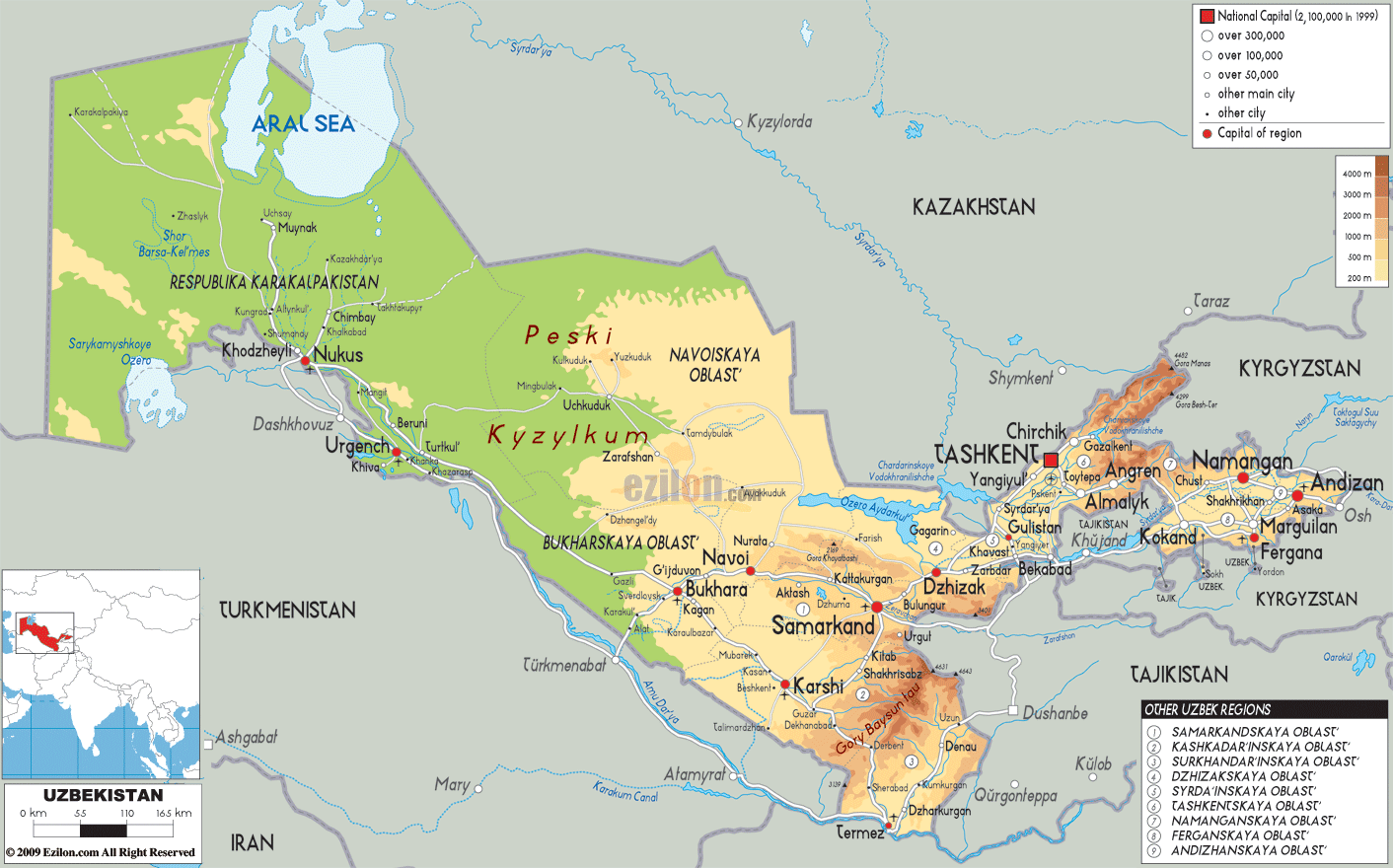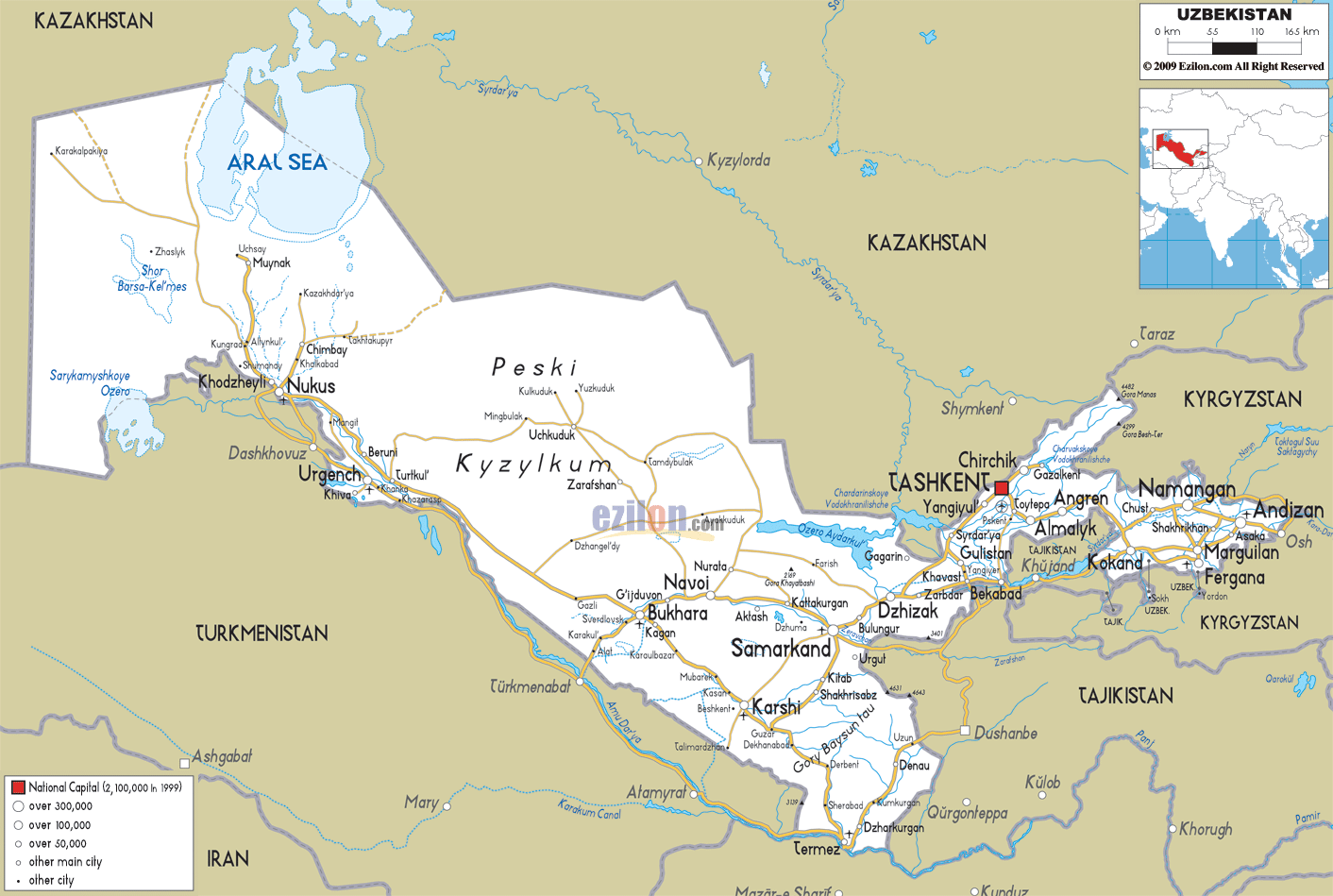 Uzbekistan officially the Republic of Uzbekistan is a doubly landlocked country in Central Asia. It is a unitary, constitutional, presidential republic, comprising 12 provinces, 1 autonomous republic, and 1 capital city. Uzbekistan is bordered by five countries: Kazakhstan and the Aral Sea to the north; Tajikistan to the southeast; Kyrgyzstan to the northeast; Afghanistan to the south; and Turkmenistan to the southwest.
Uzbekistan officially the Republic of Uzbekistan is a doubly landlocked country in Central Asia. It is a unitary, constitutional, presidential republic, comprising 12 provinces, 1 autonomous republic, and 1 capital city. Uzbekistan is bordered by five countries: Kazakhstan and the Aral Sea to the north; Tajikistan to the southeast; Kyrgyzstan to the northeast; Afghanistan to the south; and Turkmenistan to the southwest.Once part of the Turkic Khaganate and later Timurid Empires, the region that today includes the Republic of Uzbekistan was conquered in the early 16th century by Eastern Turkic-speaking nomads. The area was gradually incorporated into the Russian Empire during the 19th century, and in 1924 what is now Uzbekistan became a bordered constituent republic of the Soviet Union, known as the Uzbek Soviet Socialist Republic (Uzbek SSR). Following the breakup of the Soviet Union, it declared independence as the Republic of Uzbekistan on 31 August 1991 (officially celebrated the following day).
Uzbekistan is officially a democratic, secular, unitary, constitutional republic with a diverse cultural heritage. The country's official language is Uzbek, a Turkic language spoken natively by approximately 85% of the population; however, Russian remains in widespread use. Uzbeks constitute 81% of the population, followed by Russians (5.4%), Tajiks (4.0%), Kazakhs (3.0%), and others (6.5%). A majority of Uzbeks are non-denominational Muslims. Uzbekistan is a member of the CIS, OSCE, UN, and the SCO.
Uzbekistan's economy relies mainly on commodity production, including cotton, gold, uranium, and natural gas. Despite the declared objective of transition to a market economy, its government continues to maintain economic controls which imports in favour of domestic "import substitution".
